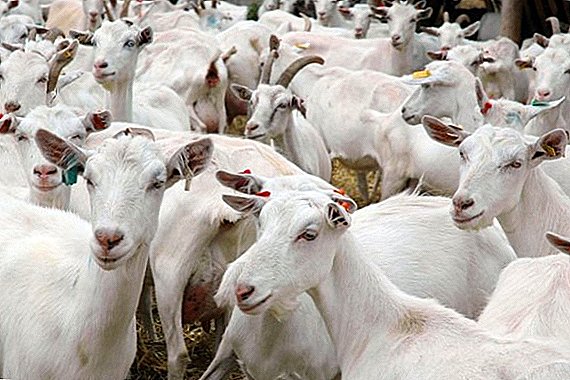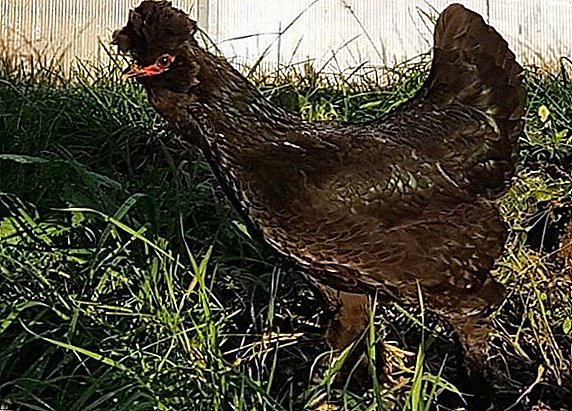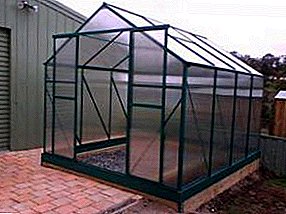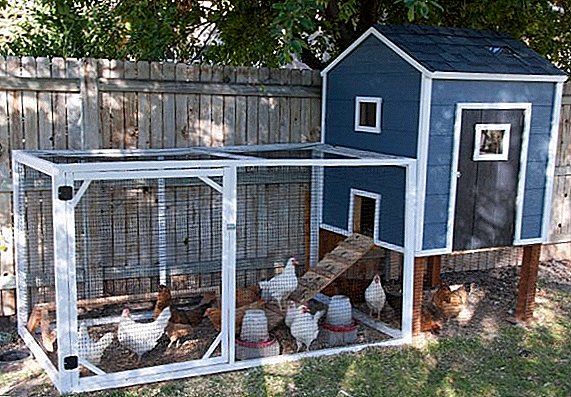 Growing meat-type chickens requires the birds to create conditions under which the yield will be maximized. A special feature of broilers is intensive fattening and quick weight gain. Therefore, the chicken coop for broilers should be maximally adapted for mass feeding of chickens up to 3-4 months.
Growing meat-type chickens requires the birds to create conditions under which the yield will be maximized. A special feature of broilers is intensive fattening and quick weight gain. Therefore, the chicken coop for broilers should be maximally adapted for mass feeding of chickens up to 3-4 months.
Differences in chicken coops for broilers and layers
The maximum weight of broiler chickens gaining 3-4 months, after which there is a slaughter.
Therefore, the main features of the chicken coop for broilers are:
- the presence of natural and artificial lighting;
- lack of drafts;
- does not need heating (when growing birds from spring to autumn);
- mandatory ventilation;
- does not need nests;
- may need space for cells;
- in cell cultivation, the presence of feeders and drinkers in each cell;
- with outdoor cultivation - the presence of an open-air cage.
We recommend reading about the joint content of hens and broilers.
The chicken coop for eggs of egg breeds is additionally equipped with nests, and its size takes into account the content of small batches of chickens and adult birds. 
Where to build on the site
Requirements for the location of the coop on the site:
- On the north side, the house should be protected from the wind by trees or another building. Accordingly, on the south side should be free space.
- If the landscape is uneven, then the coop is set on a hill. In the lowlands increased dampness, including from groundwater, so the house will also be damp, and this is harmful for broilers.
Did you know? The ancestors of modern chickens are the bankers of hens living in India. Their natural weight does not exceed 1 kg. Meat breeds bred by humans do not have the same disease resistance as wild ancestors, and therefore need to be compulsorily prevented from infectious and other diseases.
Drawing up project and calculation of the sizes
First of all, it is necessary to determine the way of growing broilers:
- floor;
- cellular.
When the floor version of 1 square. m place 3-4 broilers. In the case of cellular placement, the cells are installed in several tiers, and then in 1 section there can be from 10 to 30 heads. The minimum number of chickens in a cage is 10 pieces.  After determining the method of cultivation, it is necessary to measure the area for construction and find out the maximum possible size of the future house.
After determining the method of cultivation, it is necessary to measure the area for construction and find out the maximum possible size of the future house.
General requirements for the room:
- The roof of the house should be gable. It does not accumulate snow, and it warms up faster in the sun.
- The window should occupy at least 10% of the total wall area in order to provide sufficient natural light.
- Insulation used in covering walls must be moisture resistant, it is good to keep the air temperature inside the room and to be resistant to rodents and pests.
- When year-round cultivation in the house is desirable to equip a vestibule to limit the impact of cold air on the livestock.
- If broilers are grown in the floor way, then it will be necessary to equip the walking-open-air cage. It can be completed later.
Get acquainted with the best breeds of broilers and features of their cultivation.
Calculation of the size of the room:
- The standard height of the cage is 50 cm. When placing the cages in 3 tiers, taking into account the minimum height from the floor of at least 60 cm, the minimum height of the poultry house is 2.1-2.5 m.
- The width of the chicken coop for broilers is not less than 2.5 m, taking into account the width of the cells.
- The minimum size of the vestibule is 1.5 × 1.5 × 2.1.
If you equip a walking open-air cage, then its dimensions are taken into account: 4 broilers per 1 square meter. m  An exemplary drawing of a chicken coop with an aviary
An exemplary drawing of a chicken coop with an aviary
How to build a chicken coop with your own hands
The construction of the chicken coop will consist of:
- site preparation;
- foundation markings;
- perform the foundation;
- installation of the coop frame;
- the construction of buildings (floor, walls, roof);
- warming;
- installation of lighting systems, ventilation, water supply;
- installation of the internal equipment of the house (cages or perches, feeders, drinkers).
Did you know? One of the largest meat breeds - Brahma. The average weight of the cock of this breed - 7 kg. But there are individuals of 10-12 kg
Necessary materials
The house can be made of wood materials, stone or brick. Each material has both advantages and disadvantages.  I would like to note the advantages of designs made of wood materials:
I would like to note the advantages of designs made of wood materials:
- they are much cheaper than brick buildings;
- they are easier to assemble and dismantle.
Regardless of the material chosen, the house should still be insulated to create a comfortable microclimate for growing chickens. For the construction will need a variety of materials.
It will be useful for you to read about what norms of broiler weight during all periods of life, what to do when broilers sneeze, wheeze and cough, why broilers do not grow, what to do if broilers do not gain weight and fall to their feet.
For the foundation:
- sand and gravel for pillows;
- pipes and fittings for the column base;
- concrete.
For the chicken coop:
- timber;
- wood panels for plating;
- boards, slats;
- insulation;
- bitumen mastic.

Tools for work
Tools:
- shovels and a wheelbarrow for transportation of materials when building a foundation;
- screwdriver;
- power saw;
- hammer;
- roulette;
- construction cord, pegs for marking the foundation, brackets for fastening.
Step-by-step instruction
Before you begin, prepare the tools for the job, the materials, and once again check the dimensions in the drawing. Preparatory work for the construction include clearing the place under the coop. The plot is marked with pegs and construction cord in accordance with the construction plan.
Did you know? Broilers - These are birds obtained as a result of crossing several breed lines. Originally, these were the Cornish rocks (paternal line) and the Plymouths (maternal line).A layer of soil is removed under the foundation - about 20 cm. The removed soil can be used to create flower beds or it can pour beds on the plot.

Foundation Pouring and Floor Laying
- Foundation preparation consists of making holes for the foundation pipes, installing these pipes and creating a cushion of gravel and sand between the installed pipes in the trench. The thickness of the gravel cushion is 20 cm. The column foundation is the pipes into which the fixing fittings under the coop racks are inserted. The interior of the pipe is filled with concrete. When the concrete hardens, fixing is made of floor bar on the fixture.
- The grounding depth of the pipes is 1 m. The distance between them is at least 0.75 m. The pipe must rise above the gravel-sand pad by 0.2 m, and the fittings for fixing the wall pillars must be at least 0.25 m.
- To put a harness from a bar on the armature, holes are drilled in it.
- On concrete pillars lay waterproofing. This may be roofing material in 2-3 layers.
- Timber fasten screws.

Construction and wall insulation
- On the base frame, install supports for the walls and install a subfloor.
- Between the support bar walls install the chicken coop door and the frame for the window. If there is a small door for chickens in the aviary, then it is also installed at this stage.
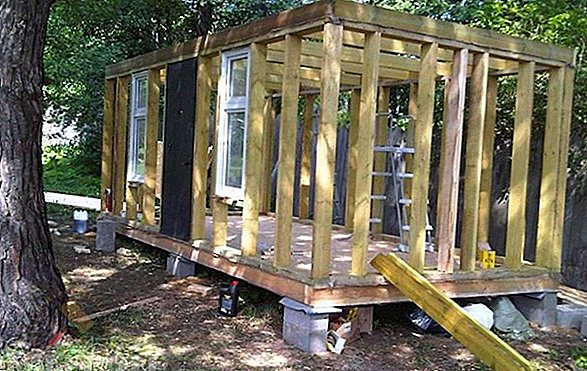
- At the same stage make the installation of the supply and exhaust ventilation system. It can consist of 2 pipes, or mechanical ventilation is provided.
- The walls are formed from OSB-plates or other plate material. Typically, the construction used plates made of compacted chips. Modern plates are not afraid of moisture, durable, retain heat well and are resistant to pests.
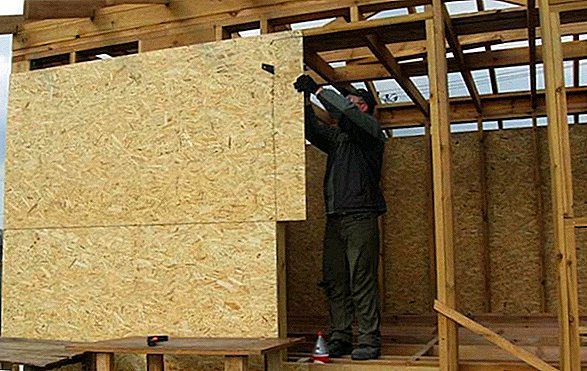
- The plates are fastened with screws to wooden supports.
- The resulting gaps are filled with foam.
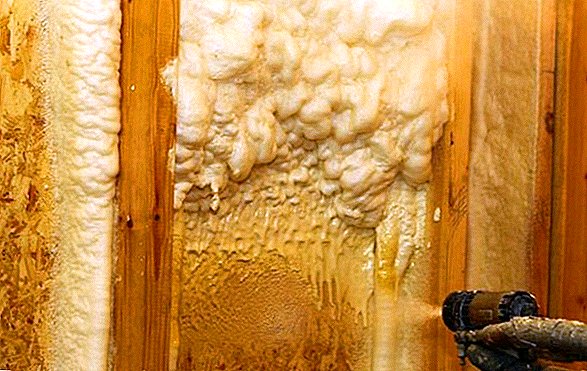
- The outer surface of the walls covered with bitumen mastic. Its purpose is the additional waterproofing of the wall surface.
- Inside the chicken coop form the floor. The first layer of the floor - wooden boards, which are installed on the logs. The second layer - insulation. The third layer is a floor covering.
Important! If the poultry house is equipped with a hinged door, and cell racks are made with wheels, the broilers can be taken out for sunbathing. This is very useful for birds.
- Also, insulation is laid on the walls inside the coop. Insulation attached rails. Then the wall is sheathed with an inner layer of plates.

Roof construction
The roof is made of hard wood. There are 2 options: with the presence of a small attic and without it. Attic improves air exchange and contributes to the extension of the life of wooden elements. For a roof with an attic, roofing is done from boards or slabs. Then install ceiling beams and perform the coating.
You will probably be interested in reading about how to build a chicken coop for 20, 30 and 50 chickens.
For roof without attic:
- the main frame is fixed on the pillars-supports;
- covered with board and insulation, as well as walls.
It is possible to cover the finished roof with slate or metal tile. When installing the roof also need to install ventilation pipes. The height of the pipes is 2 m, the diameter is not less than 20 cm. 
Arrangement of the hen house
Internally, the arrangement begins with the installation of a lighting system and heating for the nursery of small chickens (brooder). For winter broiler breeding install heating system.
The walls are treated with lime and the wooden surfaces are painted over. The window is tightened with a grid. Ventilation ducts or vents must be equipped with a mosquito net, since insects are the most active carriers of pathogens.
If the birds are kept in cages, the shelves are first formed and installed, and then the cages. They are equipped with internal or external feeders. Mounted automated water supply system. If the birds are kept without cages, then establish roosts, drinkers, feeders, as well as equip a bath for ash baths.
Important! For facing the houses can not use plastic and materials that are not resistant to moisture. Accumulating dampness, such material will serve as the basis for the development of mold and other fungi.Separately establish a nursery for chickens (brooder) with heated air to +35 ° C. The air temperature in the rest of the coop should not fall below +12 ° C. If the temperature is too low, the broiler will use the energy received from the feed to maintain body temperature, not growth.
Video: practical tips on making a chicken coop
Cell installation
When the poultry content is necessary to form racks for the cell sections. Cells can be ready, purchased or made from the grid. Cells are placed on metal or wooden shelves in several tiers.
The minimum cage height is 50 cm. Increasing the height will provide the birds with a large amount of fresh air, which is important for the prevention of diseases.
Feeders and drinkers
The placement of feeders on the outside of the cells on special mounts will be optimal. Feeders are made from polypropylene pipes or other material. The mesh size of the grid near the feeder should be 14 × 14 cm - this will provide broilers with more comfortable access to food.
Important! Nipple drinkers for day-old chicks are equipped with a nipple 3600, which can move in any direction, and for older adults - a nipple 1800.Automated system with drinkers set on the inside of the cell. Instead, you can equip vacuum drinkers, but they will need to be installed in each cell.
 Number of nipple drinkers - 1 pc. on a cage of 10 broilers. The pressure on the entire water supply line should be the same.
Number of nipple drinkers - 1 pc. on a cage of 10 broilers. The pressure on the entire water supply line should be the same.Read more about how to make a water bowl and feeder for broiler chickens.
Litter
The litter is a natural insulator that provides comfort to the chicken.
May consist of:
- straw;
- sawdust;
- husks;
- peat
Requirements for litter - good moisture absorption, low risk of injury. The laying provides natural employment of a bird and realization of natural reflexes - loosening and digging of the soil. Litter thickness - not less than 20 cm.
What else to take care
To obtain the most productive indicators, it is necessary to observe the temperature, humidity and air exchange modes in the room. For this purpose, artificial lighting, a ventilation system and a heating system are installed in the hen house. 
Lighting
Lamps should illuminate the house evenly. According to sanitary standards, per 1 sq. M. m square should account for 4 watts of light. You can install conventional lamps, LED or energy-saving. Whatever lamp you install, the important indicator will be the duration of the lighting, not the type of lamps.
Ventilation
Ventilation system capacity - 6 cu. m per 1 kg of live weight. Ventilation can be made in the form of supply and exhaust pipes, or with the help of a fan.
We advise you to read about how to make ventilation in the chicken house, and also find out what kind of lighting should be in the chicken house in winter.Lack of oxygen can cause disturbances in the cardiovascular system of chickens and lead to a decrease in the productive qualities of broilers. Airflow should not occur at the level of chick placement - it can cause a cold.
Video: ventilation in the hen house Build a chicken coop for themselves with broilers is quite capable of everyone. The selection of materials for construction depends on your preferences, while high-quality building material is found in a fairly wide price range.
Did you know? According to research conducted by Aviagen and Cobb, the color of lighting does not have any significant effect on the weight gain of broilers.Comfortable conditions for broilers will provide you with high productivity of livestock.






